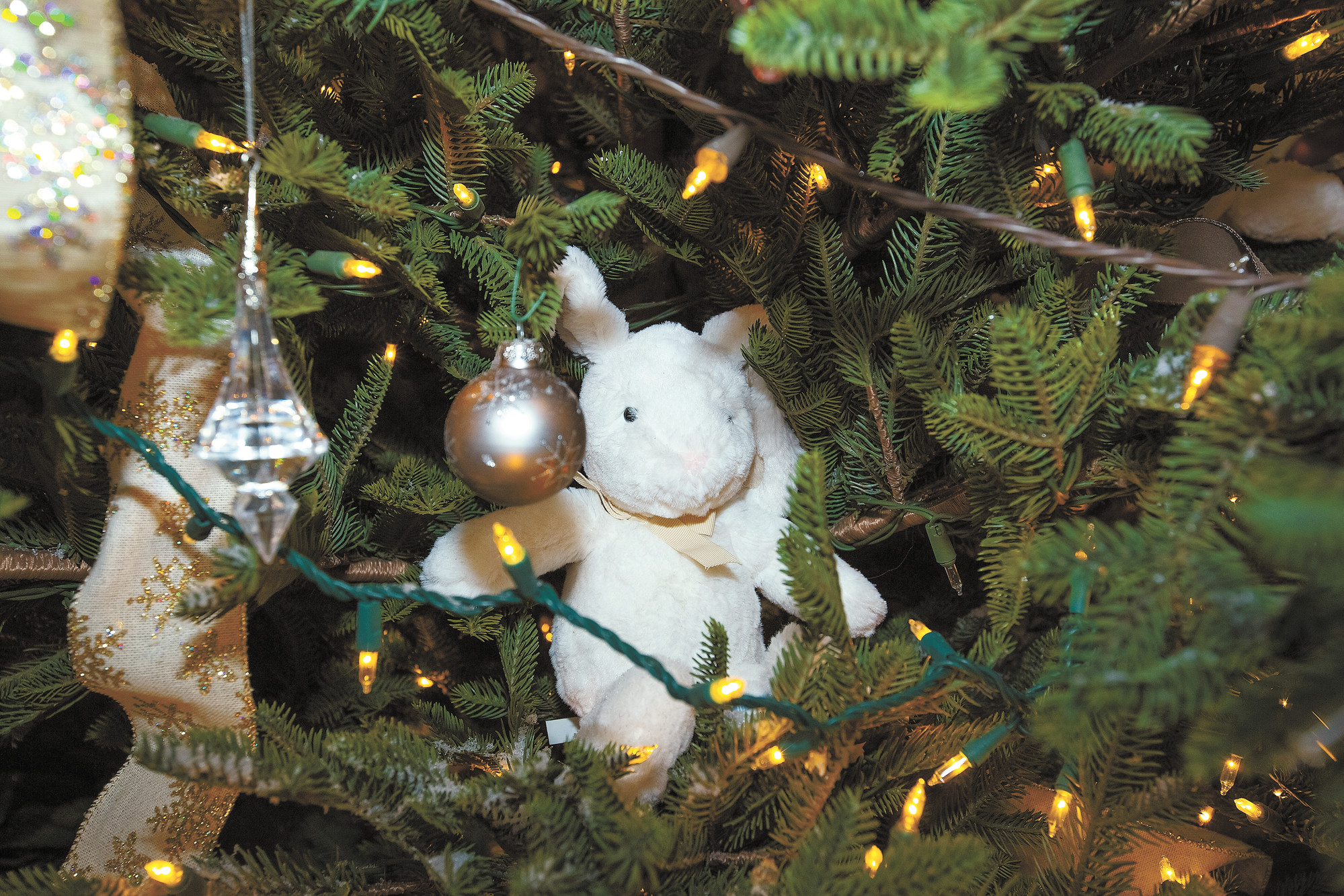Children’s books inspire Christmas tree display
The Bartow-Pell Mansion has a long history when it comes to children.
For a decade starting in 1904, after the city had bought the property from the Bartows, it was used as the “Day Home and School for Crippled Children.” Youths with polio and other diseases sought refuge near Pelham Bay’s open air.
During the only time the Bartows occupied the mansion, from roughly the mid- to late-19th century, seven children gamboled about the premises. An 1838 letter by a tutor to two of the boys depicts them as “a very agreeable family,” albeit Augustus Moore describes George Bartow, then 10, as “a pleasant little boy but does not like to study very well.”
At Christmas time, the wealthy Bartows and families on neighboring estates likely partook of the pleasures popular in their day: horse-drawn carriage rides; an opulent meal including boiled ham, roast duck and mince pie; and, of course, a glorious Christmas tree.
The museum’s current display of eight Christmas trees with decorations inspired by children’s books provides a modern take on a tradition that came to the U.S. in the Bartows’ day.
Interiors decorators from the Bronx, Manhattan and Westchester adorned the trees with captivating decorations like colorful bells, stuffed animals and handcrafted ornaments of all kinds.
A contemporary children’s story from Sweden serves as the inspiration for a tree decorated by Alice Pirsu of Pelham. In Ulf Stark’s “The Yule Tomte and the Little Rabbits,” the eponymous animals prepare for the holiday after a gnome, or tomte, decides not to do his customary Christmas job of distributing gifts (so it goes in Sweden). Toy rabbits peek out of Ms. Pirsu’s tree, whose other decorations have a snow-white motif. The museum’s Executive Director Ellen Bruzelius said local children lent the decorator their own stuffed animals for the display, noting that Ms. Pirsu has taken meticulous efforts to return them later.
A winged pig crowns a tree on the second floor of the mansion. In keeping with the message of Jan Waldron’s “Angel Pig and the Hidden Christmas,” in which a family of swine learns the gift of loving each other after going broke, designer Charles Ferruggio adorned his tree with conspicuously homemade ornaments. Those include star- and candy cane-shaped ornaments made out of thimbles and strings of popcorn garland.
There are a few miniature trees among the bunch — all of them artificial, Ms.Bruzelius said, since the museum did not want sap oozing onto the Greek Revival building and period furniture.
A short tree decorated by Tom Berta of Westchester references a book that provides a whimsical explanation for how tinsel became a Christmas staple. In Shirley Climo’s “Cobweb Christmas: The Tradition of Tinsel,” some curious spiders end up spinning a beautiful new decoration when they drop onto an old woman’s Christmas tree. Mr. Berta’s tree is decked with resplendent garland as well as real cookies like the woman in the book makes.
This year marks the fourth time the Bartow-Pell Mansion Museum has held a Christmas tree show. Themes from previous years include 19th-century children’s books and a showcase of classics like “Curious George” and “Corduroy.” Books referenced in this year’s show all deal with nature in some form.
Ms. Bruzelius said the museum has sold out all its copies of the books employed in this winter’s show. It seems to be so impressive, it might have even inspired George Bartow.
The trees are up at the musuem at 895 Shore Road until Wednesday, Jan. 7. For more information, visit www.bpmm.org.











